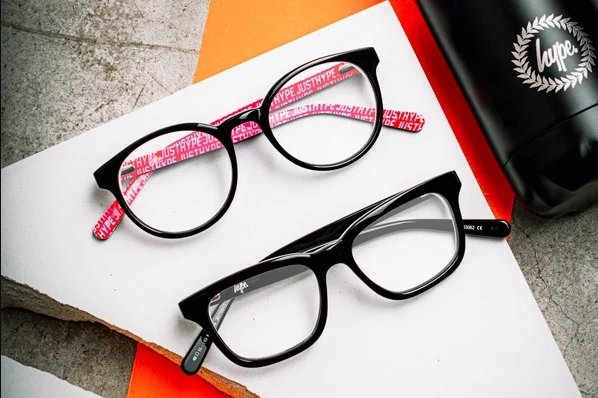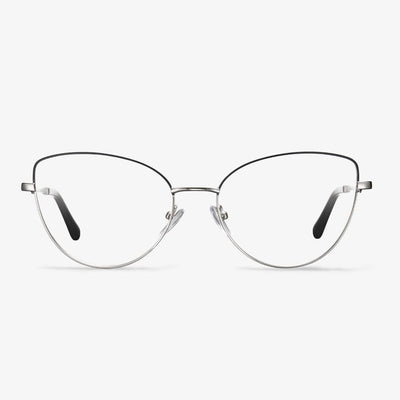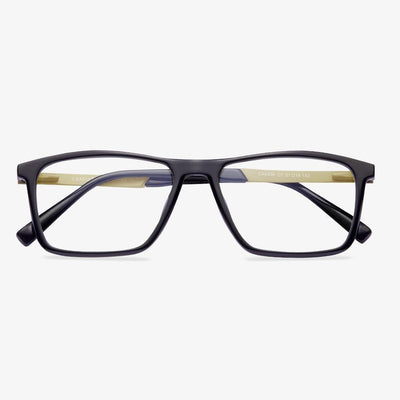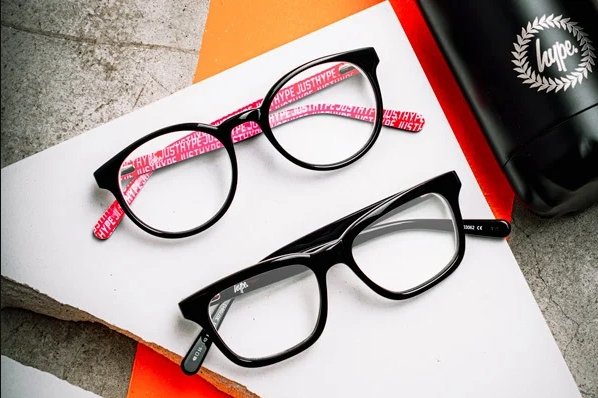The disadvantages of progressive lenses
- The field of view in the near and middle distances is relatively narrow.
- The adaptation time is longer and patients with greater astigmatism are not suitable for wearing.
- The peripheral aberration is large, and there will be large astigmatism in the periphery.
Where to Buy Glasses for Big Heads?
After learning which eyeglasses frames are suitable for big heads, you may ask where to buy them. To buy them, the online glasses store - Koalaeye Optical is recommended. It provides all kinds of glasses, eyeglasses and frames. What’s more, these glasses frames are cheap and stylish. You can also get the prescription glasses online and they will be mailed to you with great convenience.
Blue light and anti-reflective lenses
They reduce the potential for cumulative damage to the eyes.Allowing the beneficial blue light through improves clarity, they reduce glare and reflection. They can improve your visuals and reduces eye strain and nighttime reflexes. They can reduce the symptoms of computer vision syndrome, including eye strain, eye strain, and headache.
What Are Trifocal Glasses?
Trifocal glasses and no-line progressive lenses are multi-focal glasses, meaning that their lenses offer multiple correction fields. Whether you have been wearing multi-focal glasses for a while, or you have just begun to look at options for correcting vision after 40 years old, you may have heard the terms trifocal or progressive glasses.
Trifocal glasses have three different corrective lenses within one lens to offer you intermediate, distance, and near correction. Trifocal lenses look and perform similar to bifocal lenses, with an added viewing zone to help correct vision in the intermediate field, and two visible lines where the viewing zones change.
Do Colorblind Glasses Work?
To understand colorblind glasses well, you need to know how color blindness happens first. The human eye contains three photopigments that are sensitive to color. These photopigments are located inside receptors in the retina called cones, which can tell your eyes how much blue, red or green is in an object. Then they give your brain information about what color objects are.
If there is not enough photopigment in your eyes, you maybe can’t see that color. Most cases of poor color vision involve red-green color deficiency. That is to say, you have the difficulty in recognizing the red and green colors.
So, how do colorblind glasses work? Colorblind glasses like Enchroma were originally manufactured as sunglasses with lens coated in a special material that exaggerated the wavelengths of light. So, it has the effect of making colors look saturated and rich.
Though colorblind glasses do not cure color blindness or produce 100% normal color vision, they allow colorblind people to perceive colors they have never seen before and experience closer-to-normal color vision while wearing special glasses for color blindness.
How to repair rimless glasses?
First, insert the wire into a small hole in the glasses near the bridge. Pass it in and out near the bridge, then repeat the process on the other side near the temple. Once you have the thread locked, you can place the lens. Insert it into the frame and place the wire in the built-in groove. Tighten the wire so it holds the lens perfectly, then trim it to the left. Reinsert the lens into the rimless glasses. Do not try to force it back in. The best way is to cut the wires completely and replace them with new ones. Use the same process as replacing wires. To prevent glasses from popping out, tighten the wires regularly.
About the early domestic anti-reflection coating lens
Chinese coated lenses appeared in the mid-1980s. At that time, Europe (such as France and Germany) and Asia (such as Japan, Singapore, and Taiwan) had already launched coated lenses to the market, and the grade of lenses was evaluated based on the quality of the anti-reflection effect. Among them, Germany and France were the two leading countries in technology. Technically, the use of French original film material (referred to as H2) can reduce the effect by 99.98% (refers to the light transmittance, the same below). Almost you can not see the reflection, but the material is expensive. Therefore, the coating lens which is currently used in the world is born. The anti-reflection effect is controlled at about 98%, so the coating cost is greatly reduced. And it is accepted by consumers because it presents various colors, especially green. At the same time, because at the same time, it can be easily distinguished from non-coated lenses. It can reflect the high-grade film lens, and it is accepted by the sales staff.











































